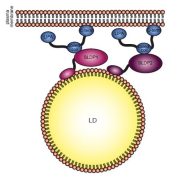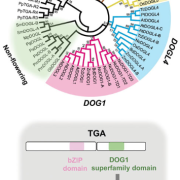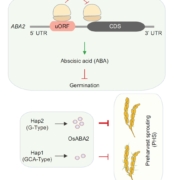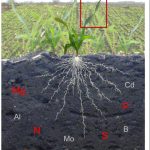Opinion. Burning lignin: overlooked cues for post-fire seed germination
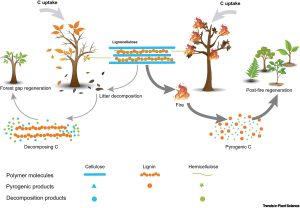 Smoke is a crucial germination trigger in ecosystems with naturally recurring fires, such as savannas and Mediterranean forests. There are various compounds in smoke, yet karrikins (KARs) –the primary product of cellulose combustion– have dominated the research efforts to elucidate the mechanisms behind smoke-promoted germination. In this piece, Cao and collaborators draw our attention to syringaldehyde (SAL), a product derived from lignin combustion with a recently described role in germination. While water can wash KARs away, SAL can be adsorbed and retained by soil particles and seeds. When the latter occurs, SAL is retained until proper germination conditions are met, acting as a “ready-to-use” germination cue. Such promoting effect has been shown in just a handful of species, so much more research is needed to evaluate the relative importance of such compounds and the evolution of such a response. However, the authors highlight that the origin of lignin and the expansion of vegetation dominated by vascular plants in the Paleozoic pretty well match the period of spreading fire event, a good scenario for the evolution of smoke-promoted germination mechanisms. Therefore, this piece points out an exciting research avenue that promises to provide a complete view of the mechanisms of smoke-promoted germination (Summary by Carlos A. Ordóñez-Parra, @caordonezparra) Trends Plant Sci. 10.1016/j.tplants.2023.01.011
Smoke is a crucial germination trigger in ecosystems with naturally recurring fires, such as savannas and Mediterranean forests. There are various compounds in smoke, yet karrikins (KARs) –the primary product of cellulose combustion– have dominated the research efforts to elucidate the mechanisms behind smoke-promoted germination. In this piece, Cao and collaborators draw our attention to syringaldehyde (SAL), a product derived from lignin combustion with a recently described role in germination. While water can wash KARs away, SAL can be adsorbed and retained by soil particles and seeds. When the latter occurs, SAL is retained until proper germination conditions are met, acting as a “ready-to-use” germination cue. Such promoting effect has been shown in just a handful of species, so much more research is needed to evaluate the relative importance of such compounds and the evolution of such a response. However, the authors highlight that the origin of lignin and the expansion of vegetation dominated by vascular plants in the Paleozoic pretty well match the period of spreading fire event, a good scenario for the evolution of smoke-promoted germination mechanisms. Therefore, this piece points out an exciting research avenue that promises to provide a complete view of the mechanisms of smoke-promoted germination (Summary by Carlos A. Ordóñez-Parra, @caordonezparra) Trends Plant Sci. 10.1016/j.tplants.2023.01.011


